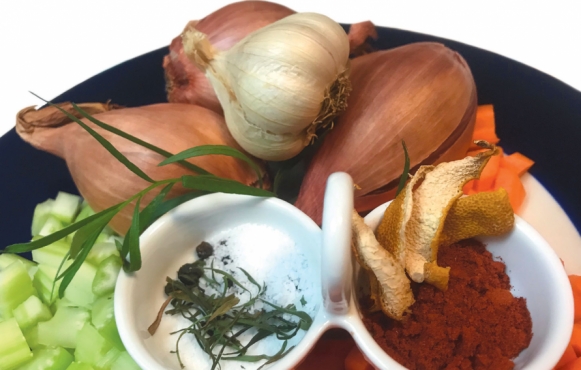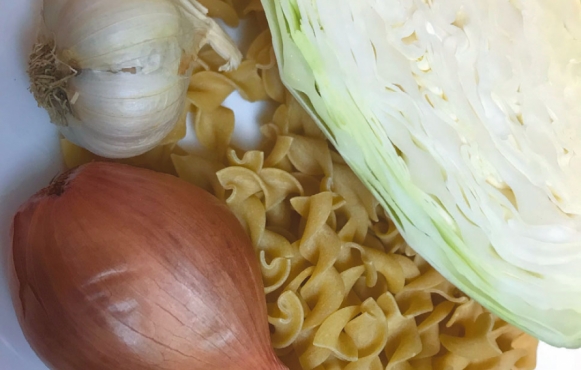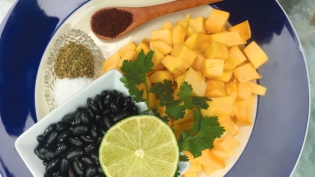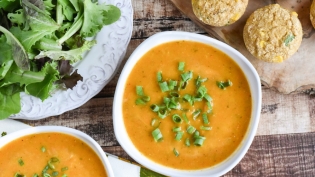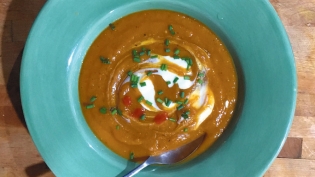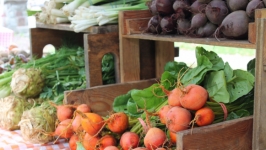Stocking A Winter Weekend Pantry Box
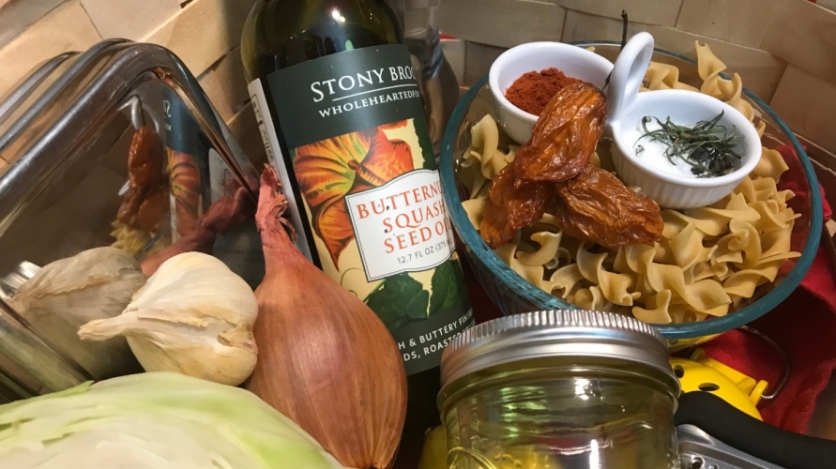
Slowly cooked, real food is often what our body craves during the long cold evenings of the season. Whether you’re heading to the slopes, enjoying a winter cabin getaway or hunkering down in your snow-covered home, be sure to have essential ingredients, kitchen utensils and on-the-go menu options at hand. Here are some tips, checklists and suggested ingredients for a palate-pleasing weekend. Perfect for those who play hard in the cold outdoors, this menu prioritizes starting the day out strong, sustaining energy and recovering after exercise.
Weekend Menu
Breakfast: Omelet (garlic, shallots, mushrooms, cheese), bacon and roasted potatoes with drizzled butternut squash seed oil
On-the-go hack for those who make first tracks: Make the omelet the night before, put it on a fresh baguette and wrap it in olive-oiled foil. In the morning, heat it in the oven for 10 minutes at 250°F. Wrapping the works in a kitchen towel will keep it warm longer, prevent leaking and provide an earthfriendly napkin.
Lunch: Black bean wrap (wholewheat large wrap, cooked or refried beans, spelt, kale, roasted garlic, walnuts, lemon zest, honey, sour cream and hot sauce [or substitute a teaspoon of vinegar])
Dinner 1: Caldo (see recipe for a versatile earthy broth with Spanish roots)
Dinner 2: Heightened haluski (see recipe for a twist on a basic Polish classic)
Pack Light, Right and Organized
Basket: Choose a durable basket that packs well and is easy to carry. Don’t fear, Yogi Bear is conked out this time of year. A classic rectangular woven wooden picnic basket (approximately 15 by 11 by 8 inches) is a safe choice for a group of two to six people. Also, its whimsical vintage appearance makes it a stylish addition to winter accommodations.
Protect from freezing: Cooler bags lining or surrounding the basket may be needed to protect some items from freezing, especially fresh vegetables and sealed liquids. Items such as honey and olive oil will turn to a solid state and not be affected much, but it can be a pain to slowly bring them back to liquid. Note: To retain most of the nutrients, use a hot water bath that does not exceed 120°F.
Protein, Cheese and Fresh Ingredients
If time allows on your getaway, it’s part of the travel experience to source these items close to your destination. Look for a farm, farmers’ market, local cheesemaker, butcher and fish market. Doing this also eases your worries about keeping volatile ingredients at the ideal storage temperature. Plan ahead and use a local tourism bureau or cooperative extension office as a resource.
Cheese, Cottage cheese, Bacon, Potatoes, Sour cream, Celery, Carrots, Butter, Eggs
Ingredients and Tools to Pack
Herbs, salt, oil, acid, condiments and sweetener: Tarragon, Paprika, Whole black peppercorns (in mill), Salt (flaky sea salt like Maldon or kosher is suggested), Olive oil (first press, extra virgin), Butternut squash seed oil, Apple cider vinegar, Dried hot peppers or sauces (those who enjoy spicy foods shouldn’t leave home without a few options), Raw honey (sweeten tea, cheese, toast or as a marinade)
Fruits, veggies, beans, grains, nuts, pasta and eggs: Lemon or limes, Tart cherry juice concentrate (packs small, adds flavor, aids sore muscles and inflammation and serves well as a cocktail mixer), Garlic, Shallots (a tasty mild onion option that can be stored as low as 32°F), Cabbage, Mushrooms (a dried wild mix or porcini travel well; plus, they’re simple to reconstitute and they provide umami), Kale, Black turtle beans (dried is best, but canned cooked or canned refried can save time), Spelt (a high-protein grain that is grown regionally and can substitute for rice), Raw walnuts (roast and salt for a snack with cheese, a salad topping or for crunch in a wrap), Baguette (use for sandwiches, alongside soup, as quick crostini for appetizers or even as bread-crumbs), Whole-wheat wraps, Egg noodles (my choice for soup pasta or haluski).
Kitchen utensils and equipment: Parchment paper, Aluminum foil (heavy duty to cover all needs), Reusable snack boxes or sealable bags (pack a few quart-sized bags in a gallon-sized bag).
Rentals or cabins may have basic kitchen, tools but it doesn’t hurt to be prepared. Here’s a short list to consider: Spatula (metal), Sharp knives (1 serrated, 1 small paring knife and an 8- or 10-inch chef’s knife), Tongs (metal), Pan (cast iron, 8 to 12 inches), Pot (3 quart or Dutch oven), Citrus press, Small cheese grater, Matches or a lighter (for a malfunctioning stove igniter, wood fire or candles), French press, Coffee grinder
Coffee and tea: Traveling with your favorite cup of warm goodness may be what you need to get into your boots and winter gear. My suggestion is to bring a choice bag of locally roasted wholebean coffee, a small grinder and a French press coffee maker. A stainless-steel tea infuser is ideal for quality loose-leaf tea, but it can also serve as a small strainer or aromatic herb sachet for soups, stocks and braises. Substitute cheesecloth or coffee filters for an infuser.


